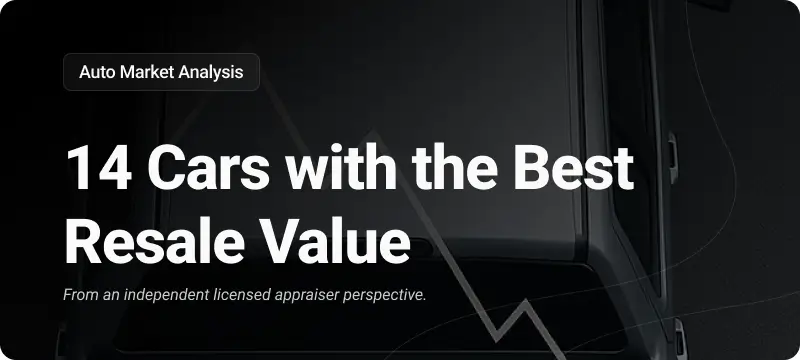Introduction
After an accident, many car owners focus on getting repairs done quickly and affordably. It makes sense—why pay more when a cheaper repair seems to fix the problem? However, low-cost repairs can actually increase your car’s diminished value loss, making it worth far less in the long run.
Diminished value refers to the reduction in a vehicle’s resale or trade-in value after an accident, even if repairs are completed. When repairs are done cheaply, using substandard methods or non-original parts, this loss in value becomes even more significant. Buyers, dealerships, and insurance adjusters can spot low-quality repairs, making it harder to sell or trade in your car at a fair price.
This guide will explain how poor repairs amplify diminished value loss, how insurance companies take advantage of these situations, and what steps you can take to protect your vehicle’s worth after an accident.
Understanding Diminished Value and Post-Accident Repairs

What Is Diminished Value and How Does It Affect Your Car?
Diminished value is the difference between what your car was worth before an accident and what it’s worth after repairs. Even when fully restored, most vehicles lose value simply because they now have an accident history. Buyers and dealerships consider this a risk, leading to lower resale and trade-in offers.
There are three main types of diminished value:
- Immediate Diminished Value – The instant loss of value right after an accident.
- Inherent Diminished Value – The permanent loss of value due to accident history, even after proper repairs.
- Repair-Related Diminished Value – The additional loss caused by poor or incomplete repairs.
Cheap or low-quality repairs directly contribute to repair-related diminished value, making it even harder to sell your car at a fair price.
How Repairs Influence a Vehicle’s Resale and Trade-In Value
Car buyers and dealerships check vehicle history reports from services like Carfax and AutoCheck to see if a car has been in an accident. If the repairs were done poorly, the car becomes even less desirable.
Dealerships, in particular, scrutinize the quality of repairs before making a trade-in offer. Any signs of substandard work, such as misaligned panels or mismatched paint, will lead to a significantly lower valuation.
The Difference Between Proper Repairs and Low-Cost Fixes
A high-quality repair restores your car to its pre-accident condition using original manufacturer parts (OEM) and factory-approved methods. A low-cost repair, on the other hand, often involves:
- Using aftermarket or salvaged parts instead of OEM parts.
- Cutting corners on structural or frame repairs.
- Poor paint matching or visible bodywork imperfections.
Even if the car looks fine at first glance, trained professionals can easily spot these shortcuts, leading to a greater loss in value when you try to sell or trade it in.
Why Low-Cost Repairs Increase Diminished Value Loss

The Role of Repair Quality in Vehicle Valuation
A poorly repaired vehicle raises red flags for buyers and dealers. If a repair isn’t done properly, it suggests hidden structural weaknesses that could affect safety and longevity. This directly reduces demand for the vehicle, lowering its resale value.
How Cheap Repairs Leave Visible Signs of Previous Damage
Some common signs of subpar repairs include:
- Mismatched paint or uneven texture.
- Gaps in panel alignment, indicating frame issues.
- Overspray or rough edges, revealing rushed bodywork.
- Worn or used replacement parts, lowering durability.
Buyers and appraisers notice these imperfections immediately, leading to lower offers or outright rejection.
The Long-Term Impact of Incomplete or Subpar Fixes
A car with low-quality repairs may develop long-term mechanical or safety issues, such as:
- Frame misalignment, leading to uneven tire wear and steering problems.
- Electrical malfunctions, especially if wiring was damaged in the accident.
- Reduced crash safety, as weakened structural components won’t provide the same protection in another collision.
These risks make buyers hesitant, pushing resale value even lower than it would be with proper repairs.
Common Low-Cost Repair Mistakes That Reduce Car Value
Using Aftermarket vs. OEM Parts – Does It Matter?
Aftermarket parts are often cheaper but lower in quality than OEM parts. While some aftermarket parts meet basic safety standards, many do not fit as well as manufacturer-approved parts, leading to functional and aesthetic issues.
For example, aftermarket bumpers or panels may not absorb impact as effectively, increasing the risk of damage in future accidents. This can be a dealbreaker for buyers looking for long-term reliability.
Cosmetic Fixes That Hide Structural Issues
Some body shops focus on cosmetic fixes rather than addressing underlying damage. A car may look perfect on the outside while still suffering from hidden frame damage or weakened safety components.
Insurance companies often push for the cheapest possible repair, prioritizing cost savings over safety and long-term value retention.
Poor Paint Matching and Overspray – Red Flags for Buyers
A mismatched paint job or visible overspray is one of the biggest giveaways of a cheap repair job. These flaws make it obvious that the car has been in an accident, significantly lowering buyer confidence and resale value.
How Insurance Companies Use Cheap Repairs Against You

Why Insurers Push for Lower Repair Costs
Insurance companies want to settle claims for as little money as possible. Many direct policyholders to “preferred repair shops” that prioritize cost-cutting over quality. While these shops meet basic repair standards, they often use:
- Non-OEM parts
- Quick, low-labor repairs
- Cheaper, less durable materials
These repairs may comply with insurance minimums, but they don’t preserve your car’s value.
How Poor Repairs Can Lead to a Lower Diminished Value Payout
If your car receives subpar repairs, insurance companies may argue that the diminished value loss is lower than it actually is. They use the fact that repairs were “completed” to minimize payouts, even if the work was done poorly.
This creates a double loss for the car owner—first, in resale value, and second, in receiving a lower diminished value claim payout.
What to Do If Your Insurance Company Pressures You Into Cheap Repairs
If your insurer is pushing for low-quality repairs, you have the right to:
- Choose your own repair shop, even if it costs more.
- Request OEM parts, if your policy allows it.
- Get an independent diminished value appraisal to support your claim.
Knowing your rights and insisting on high-quality repairs can prevent long-term financial loss.
Final Thoughts: The True Cost of Cutting Corners on Repairs
A low-cost repair may seem like a way to save money in the short term, but it often results in greater financial loss over time. Poor repairs increase diminished value loss, making it harder to sell or trade in your vehicle for a fair price.
Insurance companies often push for the cheapest repairs possible, knowing it benefits them while hurting your car’s long-term worth. By insisting on proper repairs, OEM parts, and independent inspections, you can protect your vehicle’s value and ensure a fair diminished value claim payout.
If you’ve had low-quality repairs done, consider getting a post-repair inspection and diminished value appraisal to document any lingering issues. A strong case can help recover lost value, ensuring you aren’t left with the financial burden of poor repairs.





